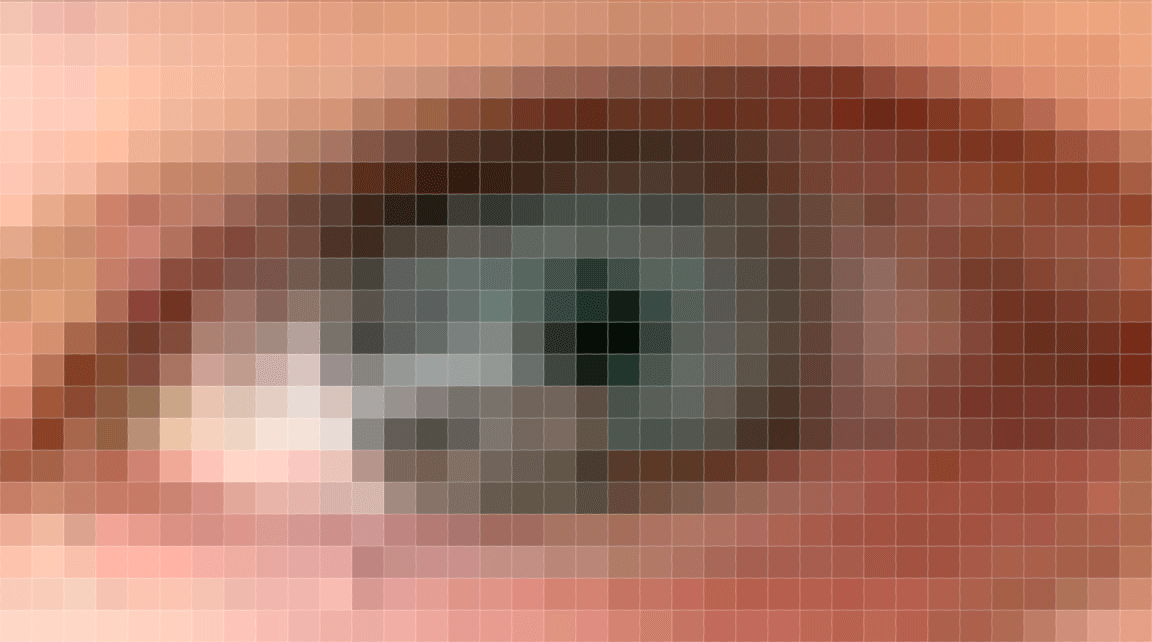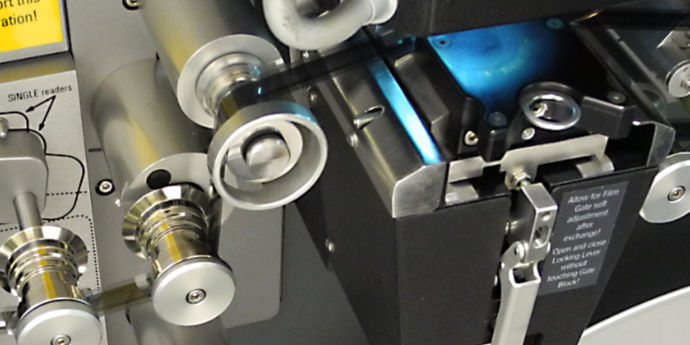I mentioned in the previous post that we would talk about Pixel Aspect Ratio (PAR). In this post we’ll talk about the historical background and in the next post we’ll look at how it affects video downsampling for this project.
Wikipedia provides a good introduction to PAR:
Most digital imaging systems display an image as a grid of tiny, square pixels. However, some imaging systems, especially those that must be compatible with standard-definition television motion pictures, display an image as a grid of rectangular pixels, in which the pixel width and height are different. Pixel Aspect Ratio describes this difference.
What are they saying here?
Firstly that most digital imaging systems use square pixels — think computers, mobile phones, tablets and LCD or plasma TVs. If you’ve ever edited a photo in software such as Photoshop and you have zoomed in very close, you can see that the photo is comprised of square pixels like this:

Secondly they are saying that there are some images which do not have square pixels and that these images are most commonly associated with standard-definition television images.
Let’s keep going with Wikipedia:
Historically, video frames were created and recorded in analog form … Standard-definition television standards and practices were developed as broadcast technologies and intended for terrestrial broadcasting, and were therefore not designed for digital video presentation.
In other words, television began as an analog technology in which an electron beam “painted” an image on the screen of a Cathode Ray Tube (CRT) as a series of horizontal lines. Variations in intensity of this beam were controlled by the analog video signal.
When the time came to supersede the analog TV system with a digital version, some kind of equivalence had to be struck — i.e. how many pixels would a digital system need horizontally and vertically to capture the information present in the analog TV image?
The analog TV system had a known “vertical resolution” because it was constructed from a discrete series of horizontal scan lines — 625 lines in the original black and white system used in Australia and subsequently in the PAL colour TV system which replaced it. However, some of these scan lines were reserved for the “vertical blanking” interval when the electron beam returned to its starting point at the top of the screen and did not carry image information.
The effective vertical resolution of the television image was therefore less than the number of scan lines. It turns out that PAL digital video images have a vertical resolution of 576 pixels (a technically more correct name for PAL digital video is “576i”.)
But what about the horizontal resolution? Here things are not quite so precise because the horizontal resolution of an analog television image is determined by how rapidly the electron beam’s intensity can be modulated — in other words it is determined by the bandwidth of the analog video signal. One also has to take into account the fact that the proportion of each scan line utilised for image information was not precisely defined and apparently varied in practice.
Wikipedia provides more clarification on this point:
Analog television signals have no pixels; they are rastered in scan lines, but along each line the signal is continuous. In digital applications, the number of pixels per line is an arbitrary choice as long as it fulfils the sampling theorem. Values above about 500 pixels per line are enough for conventional broadcast television; DVB-T, DVD and DV allow better values such as 704 or 720. [ref 3]
As noted, the nominal horizontal resolution of a PAL DVD image is “704 or 720” pixels. The difference between these two figures represents an extra 8 pixels “fudge factor” allocated on each side of the image to account for variations in width of analog video images, making a total width of 720 pixels.
Therefore strictly speaking a PAL DVD image has dimensions of 704 pixels wide by 576 pixels deep. Let’s calculate the aspect ratio of these numbers:
704 / 576 ≈ 1.22
Wait a minute! Isn’t the aspect ratio of the original television system meant to be 4:3 or about 1.33 ? Well, yes, it is. So what’s going on here?
The explanation is simple — the pixels aren’t square.
We are now in a position to calculate Pixel Aspect Ratio.
In order to make an image with an aspect ratio of 1.22:1 have an aspect ratio of 1.33, we need to “stretch” the pixel width by a factor of:
1.33 / 1.22 ≈ 1.09
This makes pixels that are wider than they are high. They are not square pixels. They are rectangular. And the ratio of width to height is the Pixel Aspect Ratio.

Wikipedia confirms that the official Pixel Aspect Ratio for PAL video is approximately 1.09.
In the next post we will look at how Pixel Aspect Ratio affects the preparation of these old Tarax Show kines for DVD release.
By the way, you can read a detailed article about Pixel Aspect Ratio, with mathematical explanations, at Wikipedia:
